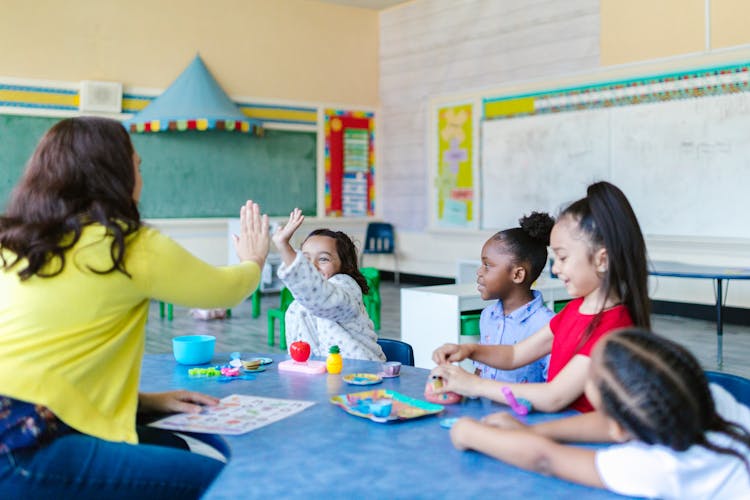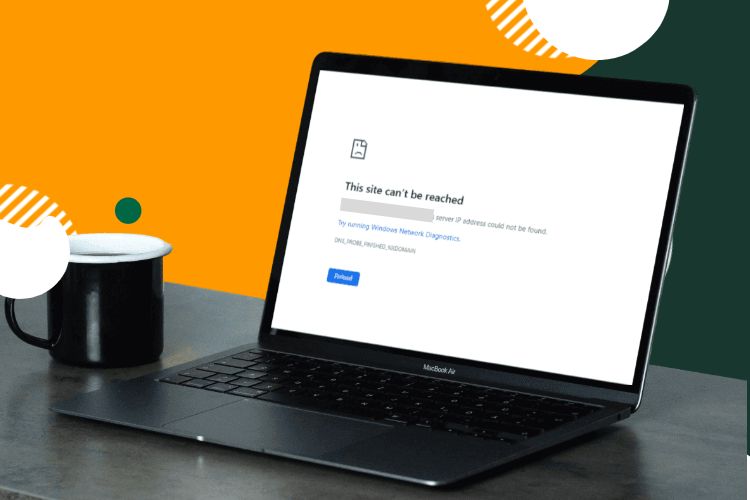People play games all the time—whether it’s on a road trip, on an outdoor picnic, or even on the toilet seat. Playing games helps people to unwind, bond, and create delightful experiences for themselves. It is also a way to keep the mind active and engaged. It’s not unusual to find the average student more immersed in gaming than in actual studies.
Over the years, games and game-like elements have been incorporated into education to engage, entertain, and educate learners in a more effective way. In this blog post, we’ll discuss what the term ‘gamification’ means, and how the application of game design elements enhances learning experience and revolutionizes education.
What Is Gamification?
Gamification is the integration of game elements and principles into non-game contexts. The application of gamification is seen in various fields, including marketing, education, employee training, health and wellness, etc. Regardless of the field, the goal remains the same—to boost engagement and motivation by the application of game design elements.
Some game-like elements used in gamification are:
- Leaderboards: This is used to highlight the top-performing players by using the rankings on a score list.
- Badges: Badges can be used to represent trophies awarded to a player or a team upon an achievement
- Points: The point system in gamification rewards users with points when they complete specific actions.
- Rewards: Rewards like unlocking bonuses, extra content, or even new levels encourage participants’ attitudes.
The traditional learning method involves students staring and listening to the teacher talk about the subject. The downside to this is that humans have a short attention span, so it’s not unlikely to notice students getting distracted or have their minds drifting away when lessons are ongoing.
Think of the times you’ve sat in a classroom and had your mind wander off somewhere outside the classroom—maybe you were thinking about lunch, or what to get your friend for his birthday. Or when you registered for this new course online, and you were so excited to learn, but after some time, you experienced a decline. What is supposed to be a learning process for you becomes a chore that you’re uninterested in, and before you know it, you abandon the course, never to revisit it again.
Game-based learning has provided a way to combat distraction and inattentiveness during lessons. In education, gamification is used to enhance interactive learning and student engagement. A classroom lesson is more interesting when learners are made to compete for rewards like points, do role-playing, and collaborate to achieve tasks. This motivates the students to participate more and enjoy the learning process. They are also motivated to do more because they understand that the more work they put in, the more rewards they get, and consequently, higher achievements.
The application of gamification in education and learning makes educational activities more fun to do, encourages active participation, and enhances engagement and performance. To do this successfully, an in-depth understanding of target audiences and their motivation is needed.
A gamified learning environment increases fun learning for students, which makes it easier to gain their attention and helps them remain focused. Collaboration in game learning also boosts teamwork because of the level of cooperation, brainstorming, and negotiation involved in group learning. Gamification can also cause a turnaround for the usually bored and distracted students in the class, making them more active and engaged in the learning process. It also helps tutors and teachers to discover new teaching styles to motivate students.
For example, Duolingo is a language learning platform that uses game mechanics to boost participation and motivation among learners. Duolingo gamifies language learning and creates a learning environment that helps learners have fun while they achieve language learning goals—that’s the power of gamification in education.
Gamification allows for an increase in the overall chances of students’ success by encouraging group problem-solving and friendly competition among them.
Is Gamification a New Concept
The answer is No. Gamified learning experiences have been a thing long before now. However, the term ‘gamification’, and the modern gamified teaching styles began in 2010. It was noticed that students engaged more in non-educational activities because they had fun doing them, which prompted the theory that the same could happen for educational activities if fun methods were implemented. Gamification became a method to encourage students to put in the work in the class, just as much as they’d do for a game.
Over the years, gamification has emerged to be an effective learning method making learning fun and providing retention in learners. Incorporating games into the learning process has transformed education and created a more wholesome approach to diverse learning.
The popularity of smartphones in the digital age has impacted the possibilities of gamification as the global gamification market is projected to reach $48.72 billion by 2029.
How Do Games Enhance and Revolutionize Learning Experiences?
The benefits of gamification in education are numerous. Apart from the fact that gamification encourages a different and unique approach to learning, it also results in improved learning outcomes. Allowing students to experience a dynamic and immersive learning process also increases their chances of having a lifelong love of learning. Some of the benefits of gamification in learning paths are:
1. Engaging and Interactive Learning
Rather than the conventional learning style that involves students simply reading or listening to information, interactive learning ensues when gamification is applied in classrooms. When students actively engage in the learning process through game-based tasks, they get to apply problem-solving strategies and critical thinking skills to solve problems, make decisions, and overcome challenges. In this case, gamification enhances the learning process by providing a deeper understanding of the lesson and helps them to retain information better.
2. Captivating Learning
It’s not unusual for learners to find some classroom activities boring. However, when learning opportunities are explored with gamification, it makes learning more enjoyable. When learners begin to enjoy the learning process, they become captivated by it. Gamified learning captivates participants and allows them to be fully immersed and interested in the learning process. Learners are motivated by healthy competition in class, and they look forward to doing more because of the associated rewards. This way, teachers no longer have to worry about anyone being left out in the learning process. Applying game elements to classroom learning causes the learning process to be captivating and fascinating to students.
3. Real-World Applications
Harnessing the power of gamification in learning encourages learners to get their hands ‘dirty’ by being actively involved. It also helps them to see the real-world applications and benefits of the lessons taught, that way, they get to have an immersive learning experience and develop new skills by practical application. They understand the importance of decision-making, teamwork, alertness, time management, critical thinking, etc., and understand how these skills influence their results, performance, or achievements, even in the real world. They also experience how their choices in the game result in certain consequences or rewards.
4. Real-Time Feedback
The traditional method to know how well students understand the lessons they’re taught is by evaluating their performance after a test or quiz. However, some students get overwhelmed by the thought of this, coupled with a certain fear of failure. This causes them to underperform in these tests or quizzes. Gamified lessons not only improve engagement among students but also provide immediate feedback on students’ assimilation and understanding of the subject being taught. The fun part of learning can encourage even the most reserved students to participate, thereby providing a means for proper assessment of understanding and instant feedback.
5. Improved Learning with Gamification
Learning is fun with gamification. Gamification can enhance the learning process by making students interact well with lessons and boosting their desire to unlock new levels and get rewards. Their learning experience is transformed into one that is more engaging and interactive, which is effective in improving the learning process for them.
6. Increased Content Engagement
Gamification can increase engagement through discussions, collaborative challenges, and group quests, which in turn encourages a natural flow of progression in learning, causing them to engage more with the learning content and have an intrinsic value of learning.
7. Enjoyable Learning
Not only does gamification promote active participation in the learning process, it also provides students with a more enjoyable learning experience. When students enjoy the learning process, they’re likely to look forward to it more and willingly participate in it. This way, it becomes less of a chore, and they’re enthusiastic about it.
8. Competition and Collaboration
Students often have to work together to achieve a common goal. Implementing gamification in education may aid collaboration and teamwork in the learning process. This promotes healthy competition among the students as they work together, fostering team spirit and a sense of camaraderie. The collaboration teaches students the value of synergy and also nurtures their communication and bonding skills.
9. Rewards and Incentives
The use of reward systems in gamified learning to measure achievement makes it more effective. Winning is a natural human desire, so it’s not unusual that students will want to give their best to score more points, earn badges, and rank higher on the leaderboard—anything that indicates their level of achievement boosts their morale and willingness to do more in class.
Conclusion
Gamification in education can be a leverage to engage students and achieve their learning goals. Games can be immersive and addictive because game elements help to increase participation and engagement. Hence, it makes complete sense to incorporate these gaming elements into the learning process to achieve the same results in the classroom with students. The learning journey is made engaging and effective with gamification. To achieve learning goals, tutors, and teachers incorporate gamification as a routine part of lesson activity for students. Gamification holds immense potential in the educational sector, making learning more engaging and providing a personalized learning experience for students.




